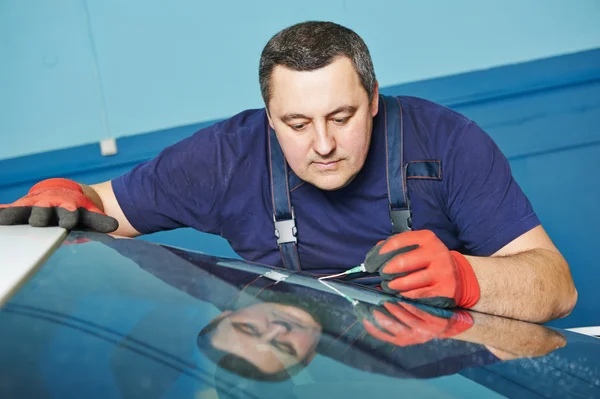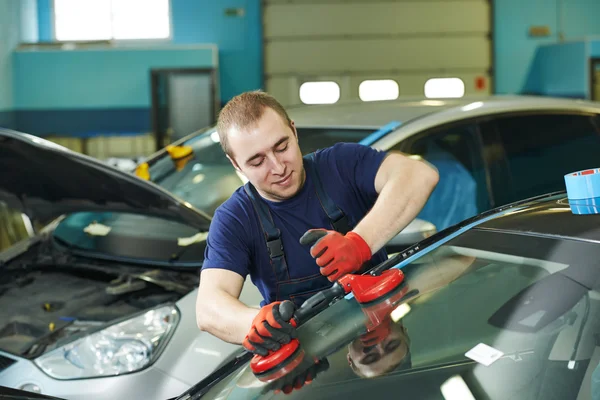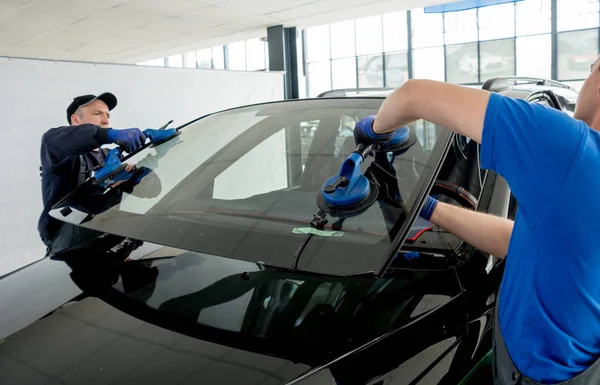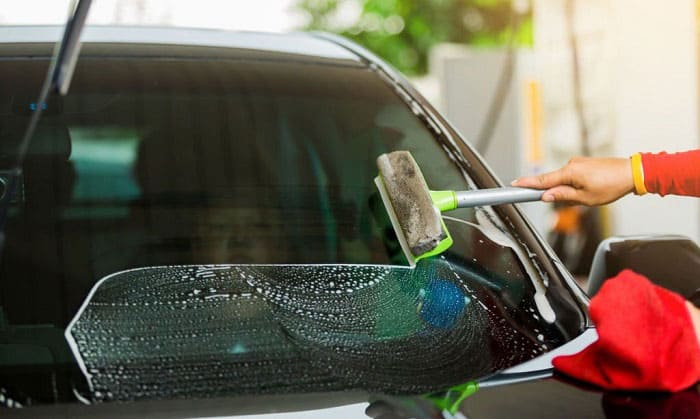What to Do After a Windshield Replacement? When you drive,...
Why You Should Be Buying OEM Windshields?

There are some auto parts that you might not think about until they go wrong. The windshield is one of those parts. But, windshields are pretty important when it comes to driving your car safely. If a crack or chip appears in your windshield, you must take action right away before it spreads further and compromises the safety of you and everyone else on the road. Fortunately for you, there are a few different options when it comes to replacing your cracked or broken windshield. Unfortunately, many people assume that if an aftermarket part is cheaper than OEM, then it’s a better option. In many situations, that’s not true.
Prices for OEM glass can run 40% to 60% higher than comparable aftermarket windshields. OEE or Original Equipment Equivalent Windshields are windshields manufactured by the same companies that make OEM but the logo on the glass is that of the glass manufacturer not the auto maker.
1] What is an OEM Windshield?
An OEM windshield is an original windshield that came with your car when it was new. When you buy a car, the windshield will be covered under the car warranty for up to two years. If you want to replace the windshield with an aftermarket part, you’ll have to pay the full cost out of pocket. Oftentimes, OEM windshields are more expensive than aftermarket parts. OEM windshields have several advantages over aftermarket parts. First, they’re designed to perfectly fit your car. If you buy aftermarket parts, they have a chance of not fitting correctly. Poorly fitting parts can lead to leaks and other problems. OEM windshields are also designed to be stronger than aftermarket parts. They’re made with a higher quality material that can withstand more damage. Finally, most OEM windshields come with a lifetime warranty. This means that if the windshield ever leaks or breaks, you can take it in and it’ll be replaced free of charge.
2] Why Buy OEM Windshields?
As we just saw, there are plenty of reasons why OEM windshields are the better option. But, why would you want to spend the extra money on an OEM windshield? If you’re on a tight budget, you might be wondering why you’d want to spend even more money than you need to on a windshield. In most situations, you’ll actually save money by buying OEM windshields. Here’s why: – You’ll save on installation costs – If you buy aftermarket parts, you’ll probably have to pay extra for installation. With OEM parts, however, installation is included in the cost of the part. So, you won’t have to pay an extra fee to get it installed correctly. – You can get a warranty – Some aftermarket parts come with warranties, others don’t. With OEM parts, you can expect to be given a warranty. The terms of this warranty might vary from one manufacturer to another, but you can rest assured knowing that you’ll be covered if your part ever breaks or leaks.
3] Pros of OEM Windshields
If you’re still not convinced that OEM windshields are the better option, here are a few more reasons why you should always buy OEM parts: – OEM windshields are designed to withstand a lot of damage – A crack may seem like a small problem, but it can become a big one if you don’t take care of it right away. A minor crack can quickly turn into a major crack if it goes unrepaired. – OEM windshields are designed to last longer than aftermarket parts – While an aftermarket part may work well for a few years, an OEM part will last for decades. Some car owners have had the same windshields on their cars for over 20 years! – OEM windshields are safer for you and everyone else on the road – A windshield is designed to protect you in the event of a collision. If you buy aftermarket parts, you have no way of knowing if they’ll provide the same level of protection.
4] Cons of OEM Windshields
As we’ve discussed, there are many advantages to buying OEM parts. However, OEM parts don’t always make the most sense for every situation. Whenever you’re considering buying an aftermarket part, ask yourself these questions: – Is the part necessary? – If the part you need is broken or damaged, you’ll obviously have to replace it. But, if the part is just a bit worn out, it might be a good idea to repair it instead. If you need to replace a part, make sure it’s necessary. – Is the part necessary right away? – If a part is broken or damaged, you need to replace it right away. But, if you’re just getting a little bit of wear and tear, you might be able to repair it. If a part is a safety concern, it’s always best to replace it. But, if it’s not a safety risk, it may make more sense to repair it.
5] Should You Always Buy OEM?
As we’ve discussed, there are many advantages to buying OEM parts. However, OEM parts don’t always make the most sense for every situation. Whenever you’re considering buying an aftermarket part, ask yourself these questions: – Is the part necessary? – If the part you need is broken or damaged, you’ll obviously have to replace it. But, if the part is just a bit worn out, it might be a good idea to repair it instead. If you need to replace a part, make sure it’s necessary. – Is the part necessary right away? – If a part is broken or damaged, you need to replace it right away. But, if you’re just getting a little bit of wear and tear, you might be able to repair it. If a part is a safety concern, it’s always best to replace it. But, if it’s not a safety risk, it may make more sense to repair it.
6] Bottom line
When you buy aftermarket parts, they may not fit correctly or they may not last as long as promised. OEM parts, on the other hand, are designed to perfectly fit your car, last a long time, and provide the best level of protection for you and everyone else on the road. If you’ve been struggling to keep up with auto expenses and feel like you’re spending too much on maintenance, repairs, and replacements, then it might be time to start thinking about ways to cut down on costs. Buying OEM parts for your car is one great way to do just that, and will save you a significant amount of money in the long run when compared to buying cheaper aftermarket parts.
Read more Articles
How long does it take to replace a windshield?
How long does it take to replace a windshield? A...
How to Defog Car Front Glass Naturally
How to Defog Car Front Glass Naturally Let’s face it:...



